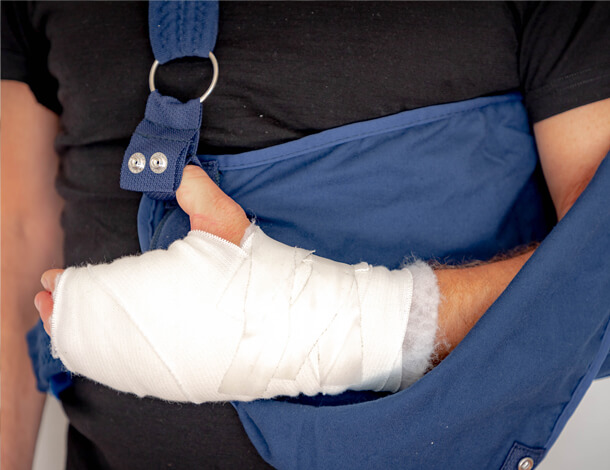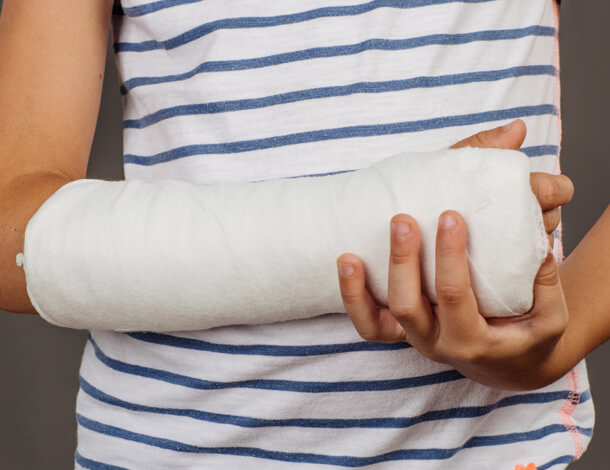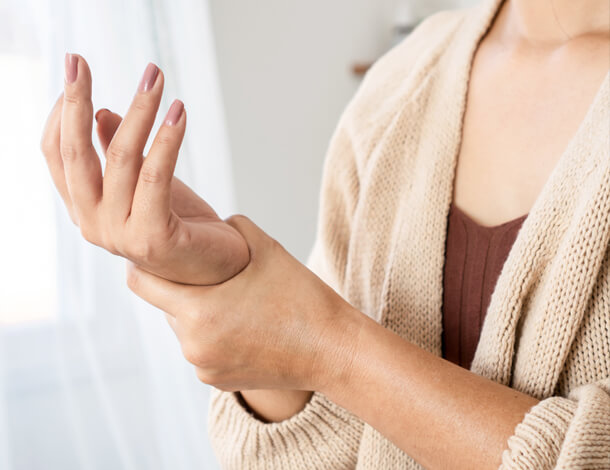What Is a FOOSH Injury, and How Do I Know if I Have One?

Despite the strange name, sustaining a FOOSH injury is very common.
FOOSH stands for “fall onto an outstretched hand” and is a catch-all term for various injuries. What all FOOSH injuries have in common is how they occur—when a person puts out their hands to brace themself during a fall.
Keep reading to learn the specific types of injuries that fall into the FOOSH category and when to see a doctor for diagnosis and treatment.
What Are FOOSH injuries?
Think about the last time you tripped and fell. Was your first instinct to put your hands out to brace for impact? We’re naturally wired to do this to protect our face and head from serious injury.
Unfortunately, when you extend your hands to brace for a fall, your entire arm takes on the impact, which can cause an injury in your fingers, hands, wrists, elbows, or shoulders.
Types of FOOSH Injuries
Because the entire upper extremity is at risk for a FOOSH injury, there are several different types of conditions—of varying levels of severity—that can occur.
Some of the most common FOOSH injuries include:
- Bruising/Scrapes. If you fall or skid on a rough surface like concrete, you can get a cut, scrape, or bruise on your hands or arms.
- Wrist Fracture. A break in one or more bones in your wrist including distal radius fractures can happen during a hard fall.
- Elbow Dislocation or Elbow Fracture. The impact of a FOOSH can cause your elbow to pop out of its joint or even cause a bone in your elbow to break.
- Radial Head Fracture. The bone just below your elbow can also break on impact.
- Proximal Humeral Fracture. This fracture occurs when your arm bone becomes jammed into your shoulder joint.
- Collarbone Fracture. The force of a FOOSH can sometimes travel up the arm to the collarbone, causing a fracture.
- Shoulder Dislocation. Like the elbow, your shoulder can also come out of its joint, causing a partial or complete dislocation.
- Cellulitis. A bacterial infection can sometimes occur at the site of a FOOSH injury (most commonly in people with a compromised immune system).
Common Causes
Everyone falls down once in a while, and a FOOSH injury can happen to anyone at any age. There are several reasons these falls occur, but some common causes include:
- Tripping on an object or uneven ground
- Suffering from vertigo or dizziness
- Falling down stairs
- High-impact sports like football, hockey, or gymnastics
- Individual activities like cycling or skateboarding
- Weakness or instability (common in older adults)
Symptoms of a FOOSH injury
Because FOOSH injuries span a wide range of conditions, the types and severity of symptoms you may experience will vary. But if you’ve recently fallen with your hands outstretched and sustained a FOOSH injury, you may notice one or more of the following symptoms:
- Pain
- Bruising
- Swelling
- A Cut or Break
- Limited Movement
- Difficulty Bending Your Wrist or Elbow
When Should I See a Doctor?
If your fall results in a scrape or minor bruising, you might be able to treat your injury at home with basic first aid. However, any severe or persistent pain or difficulty moving or bending your fingers, arms, wrists, or shoulders requires a trip to a physician.
If you’re in severe pain or felt a pop or break on impact, head to the emergency room immediately.
If you’re unsure whether or not you sustained an injury during your fall, it’s best to err on the side of caution and see a doctor. Trying to self-diagnose your condition or “wait it out” can sometimes do more harm than good and could result in more severe or long-term damage.
An orthopedic specialist will examine your FOOSH injury and may order an X-ray and/or MRI to look for tears or breaks. They’ll recommend the appropriate treatment plan when they’ve made an official diagnosis.
How Long Does It Take to Recover From a FOOSH Injury?
Just as the symptoms vary, so do the treatments and recovery times for FOOSH injuries. If your injury was minor, you could return to normal within a few days or weeks. Occasionally, casts or surgeries may be needed to treat more severe injuries like fractures.
You and your doctor will work together to develop a treatment and recovery plan that takes into account all factors such as your injury, health overall, and lifestyle. They may also recommend specific exercises or therapy to help you recover.
Can You Prevent a FOOSH Injury?
While FOOSH injuries can happen to anyone at any age, there are things you can do to protect yourself and your loved ones.
To prevent or reduce the impact of a FOOSH injury:
- Wear the appropriate gear when playing sports or recreational activities (e.g., protective gloves, wrist guards, elbow pads, etc.)
- Wear shoes that fit right and that you can walk in safely
- If you’re weak or unsteady on your feet, use a cane or walker for assistance
- Use extra care when walking over ice or other slippery surfaces (and keep sidewalks and driveways salted in the winter)
- Be mindful when carrying something large that obstructs your view of the ground
- Always use handrails when walking down stairs
- Pick up items around your house or yard that could be tripped over
See the Orthopedic Experts at IHTSC
For over 50 years, Indiana Hand to Shoulder Center specialists have provided complete care for hand, wrist, elbow, and shoulder injuries, disorders, and conditions.
It is our goal to relieve your pain and enable you to get back to your normal life after an injury. IHTSC’s world-renowned group of hand surgeons, advanced practice providers, and experienced therapists will always explore conservative treatment options first and consider surgery only if necessary.
You might also like:



